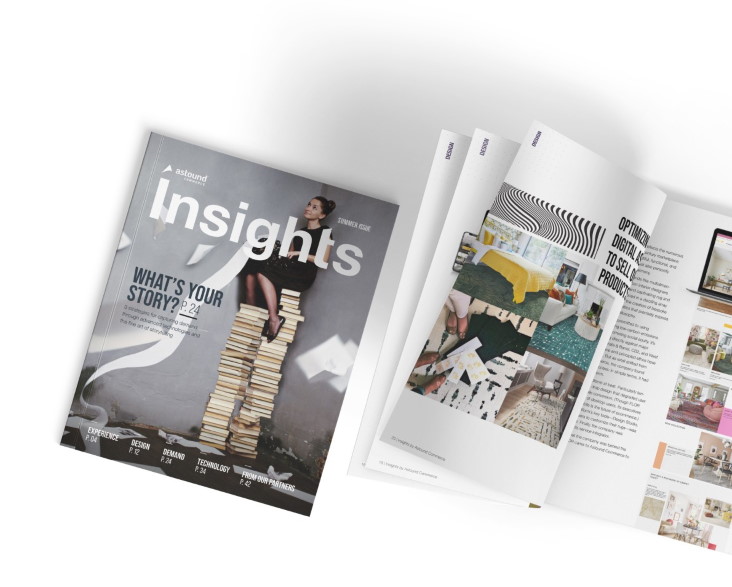But every bottle of that wine must be marketed and sold—a daunting task, given the sheer range of choices and a customer base that is fickle and sensitive to price point. The prospect of a warehouse full of unsold wine is a specter that haunts every wholesaler, retailer, and producer dependent on second and third reorders—one that can quickly negate the romantic narrative that is central to wine’s appeal.
While ecommerce is recognized as a highly effective means of moving wine direct-to-consumer, the full B2B power of digital technology isn’t yet widely appreciated in the wine industry, says Sean Dunn, head of demand for Astound.
“The standard practice for producers is to accept big checks from wholesalers and national accounts and then hope the product sells through,” says Dunn. “But there’s always the potential for massive under-performance. Post-COVID, retailers and wholesalers are moving to an on-demand model that minimizes inventory and risk. There are only two ways to offset that trend: the first is to own more end customer relationships at distance; and the second is to leverage that consumer intelligence to help on and off-premise retailers more accurately estimate local demand, supplying outlets with the wines consumers want when they want them, tracking all changes across all touchpoints, and implementing sales and marketing programs that work at a local level.”
Enabling wine and spirits producers to empower B2B stakeholder groups with this kind of intelligence—powering brand knowledge, collateral, and programming across markets—is just as important to the producer as B2B efforts to build market share in those markets. Central to Astound’s services is Wingman, a proprietary solution that improves sales performance by aligning customer relationship management (CRM) with established viticultural and enological knowledge, industry and market news, consumer profiles, digital assets, and flexible training programs within a software-as-a-service (SaaS) ecosystem. Wingman lets brands and distributors employ data from multiple sources to create bespoke, spectacularly effective marketing programs linked to specific wines, foods, and locales.
Moreover, data-driven strategies become increasingly effective as new information is incorporated over time, says Josh Lucero, Astound’s director of sales enablement. “For example, we supported a program between Capital Grille and Treasury Wine Estates that linked a specific summer food menu with five rosé and white wines,” Lucero says. “We aligned program intelligence within Wingman with seller-side data flow and POS [point of sale], so that in following summers we could focus on the top wine/menu pairing performers per restaurant per audience segment and make product and digital marketing decisions that maximize ROI.”
This information is also tracked against consumer digital marketing programs in localized and off-premises outlets.
“Ultimately, we can determine appropriate marketing spend within five miles of each Capital Grille restaurant,” says Dunn, “and we can also identify the wines that are most popular within each specific geographical area, allowing restaurants and distributors to concentrate on the wines that are moving in their regions while foregoing wines that aren’t selling.”
Data-driven strategies also help companies develop the merchandising and training programs they need to effectively promote their wines, says Dunn.
“In one project, we worked with Rosenblum to elevate its Zinfandel indexing in Texas,” says Dunn. “We looked at the compliance data to determine if wholesalers, retailers, bar staff, and wait staff were getting properly trained on Zinfandel, and it was clear that they weren’t. So we created a barbecue and Zinfandel education program for stakeholder groups and launched the ZinQuest Rules Contest for consumers across Texas that paired great barbecue with amazing wines. Within two quarters, Rosenblum went from under-indexing at 5 percent to over-indexing at 3 percent. That 8 percent bump was an enormous proof of concept on the efficacy of leveraging data within a system.”

Lucero says Wingman allows wine-related businesses to shape their marketing strategies “with a scalpel rather than a weedwacker,” creating programs that are highly segmented, localized, and effective.
“Our goal in every project is to take this very detailed data and slice it and dice it for the client so they can integrate it into whatever CRM system they’re using,” says Lucero. “It’s analysis on a micro scale, leading to highly curated and customized marketing that matches demand with the right wines, maximizing depletion rates. We become the link between three-tier B2B and B2C activation—which drives more than 80 percent of the revenue for most wine companies.”
Further, data-driven strategies can incentivize as well as inform, Dunn observes.
“We’ve used Wingman with our wholesalers to drive team competition models,” says Dunn. “Proving that staff compliance on education and training tracks straight through to depletion and sales. So by linking compliance to compensation, we maximize staff effectiveness.”
In the end, concludes Dunn, Astound’s analytics create a “virtuous loop” linking the B2B and B2C wine sectors.
“Data on accounts, objectives, programs, and user needs are synchronized by Wingman and integrated with the consumer and account CRM data in an ongoing process,” he says. “The result is constant optimization of marketing strategies, greater compliance, accelerated inventory depletion, happier consumers, and enhanced revenues.”
